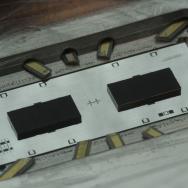From water boiling into steam to ice cubes melting in a glass, we’ve all seen the phenomenon known as a phase transition in our everyday lives. But there’s another type of phase transition that’s much harder to see, but just as stark: quantum phase transitions.
When cooled to near absolute zero, certain materials can undergo these quantum phase transitions, which can make a physicist’s jaw drop. The material can flip from being magnetic to non-magnetic, or it can suddenly acquire the superpower to conduct electricity with zero energy lost as heat.
The mathematics behind these transitions is tough to handle even for supercomputers—but a new study from the University of Chicago suggests a new way to work with these complicated calculations, which could eventually yield technological breakthroughs. The shortcut pulls only the most important information into the equation, and creates a “map” of all possible phase transitions in the system being simulated.
“This is a potentially powerful way of looking at quantum phase transitions that can be used with either traditional or quantum computers,” said David Mazziotti, a theoretical chemist with the Department of Chemistry and the James Franck Institute at the University of Chicago and senior author of the study.
He and other scientists think that if we can fully understand the complex physics at play behind quantum phase transitions, we could unlock doors to new technologies. Similar discoveries in the past, for example, have led to MRI machines and the transistors that make possible modern computers and phones.
A streamlined approach
The phase changes you’re familiar with, such as evaporation and condensation, happen due to temperature changes. But quantum phase transitions are triggered by some interference in their environment, such as a magnetic field.
The phenomenon occurs as a result of many electrons acting in relationship to one another—a type of interaction that falls under a notoriously complex subfield known as “strongly correlated” physics. Traditionally, in order to simulate these quantum phase transitions, scientists must create a model that incorporates the possibilities for every single electron. But the computing power needed to run these simulations gets out of control very quickly.
Quantum computers are thought to be better fits for this kind of problem than conventional computers, but even this method has its obstacles: for example, these problems create a ton of data that then needs to be translated back into the language of “regular” computers for scientists to work with them.
So the researchers wanted to see how they could simplify the calculation without losing accuracy.
Instead of creating a simulation that calculates every single variable in a given quantum system, they found a different approach: substituting a set of numbers that describes the possible interactions between each pair of electrons. This is called a “two-electron reduced density matrix.”
“By measuring the set that describes the two-electron reduced density matrix, we end up creating a map of all the different phases the quantum system can experience,” explained graduate student Sam Warren, the first author on the study.
This “map” itself, he said, also offers useful benefits: “It allows you to see transitions that might otherwise be missed, and it creates a really powerful visualization that lets you easily and quickly grasp a high-level overview of the system.”

The team tried using the method to model several different kinds of phase transitions and found it was just as accurate as the traditional, more data-intensive method.
“It gives us the fundamental physics we need to understand the system, while minimizing the computing demands,” said graduate student LeeAnn Sager-Smith, the second author on the study.
Mazziotti hopes the method is useful not just for running simulations on quantum computers, but for developing our understanding of quantum phase transitions overall. “There are some areas that have been underexplored because they are so difficult to model,” he said. “I hope this approach can unlock some new doors.”
Citation: “Quantum simulation of quantum phase transitions using the convex geometry of reduced density matrices.” Warren, Sager-Smith, and Mazziotti, Physical Review A, July 26, 2022.
Funding: U.S. Department of Energy Office of Basic Energy Sciences, U.S. National Science Foundation.









